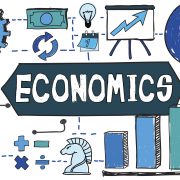Economics often seems confusing primarily because many economists wish it to be. This reliance on their knowledge has allowed central authorities to plan and control economies for centuries. But many of the essential principles of economics are identifiable in our everyday lives.
One does not need charts or graphs to be able to understand that every decision we make is based on a cost-benefit analysis. Even if we do not even realize this process is occurring, each decision we make is finalized by weighing it against another option, a fundamental principle of economics.
The sunk cost fallacy is another principle that can be found in many real-life scenarios.
The Uncomfortable Boots
The sunk cost fallacy is, most simply put, knowing when to quit. So often in life, we mistakenly double down on our losses rather than quit while we are ahead. And much of this is due to the emotional investment that accompanies the decision-making process.
If I were to buy an extravagantly priced pair of boots, that turn out to be unbearably painful to wear, I have two options: I can cut my losses and stop wearing the boots, even though I paid a high price. Or, I can continue wearing the boots because I feel as though I must “get my money’s worth.”
But in choosing the latter, I have actually lost twice. I already paid the initial cost for the boots. Assuming that since I wore them they are now unreturnable, there is nothing I can do, aside from creating a time machine, that will allow me to make up for that initial loss. This is precisely what makes my next decision so important.
If I neglect to wear these boots, thus saving my feet the torture of having to walk in them, I will “cut my losses.” I can move on having learned an important lesson and with comfortable feet.
But if I decide to wear them as much as possible since I paid so much for them, I pay the initial cost plus the pain felt each time I force myself to wear the boots.
But there was an emotional connection I had with those boots during the initial decision-making process. In this case, the attachment I had to the physical appearance of the boots caused me to sacrifice both money and comfort.
The Buffet
For those who may not relate to the boots example, another common association with the sunk cost fallacy is the great buffet conundrum.
In anticipation of an all-inclusive Vegas buffet experience, you decide to forego breakfast and lunch. Plagued with hunger and feeling absolutely miserable, you decide that you must endure this feeling because later you will feed yourself ungodly amounts of food.
The time for dinner is finally here. After you pay the all-inclusive cost and make your way around the entire buffet once, you realize that there is no possible way you can squeeze any more food into your body. But you are not willing to throw in the towel just yet. So, you consider your options.
Having already spent the day in anticipatory agony and paid the price for the buffet, you have already paid a nonrefundable cost. If you decide that you have already made it this far, and must make it around the buffet yet again, you will end up paying an additional cost. You risk the likely possibility that this overindulgence will result in discomfort or extreme sickness.
If on the other hand, you are able to dissect the situation more rationally you may decide to quit while you are ahead and save yourself any further discomfort. After all, you have already been in pain throughout the day, you owe it to yourself to be comfortable now.
But again, so often in life, we relate back to that first initial decision and use it as justification to double down on this initial stance.
A Simple Principle Many Ignore
Yet, as simple as this basic economic principle is, it continues to plague policymakers. Once there is an emotional investment into a specific plan of action, even if the economic benefit isn’t there.
Legislators who have emotional investments in certain policies can easily forget that by doubling down on a misguided stance, they are actually losing twice. This type of thinking has been seen in the War on Drugs, which has failed and yet continues to be waged by the federal government despite hemorrhaging costs.
In foreign policy, this happens often as well. When an objective is not being met, but sacrifices have already been made, many policymakers forget that sticking to their guns would mean a continuation of human casualties in addition to economic losses.
But the same process that might help a politician understand the consequences of doubling down on a decision, is the same each of us encounters daily when making choices. And if we understand this, we can become better at cutting our losses and getting out of a bad situation while the gettin’ is good.







